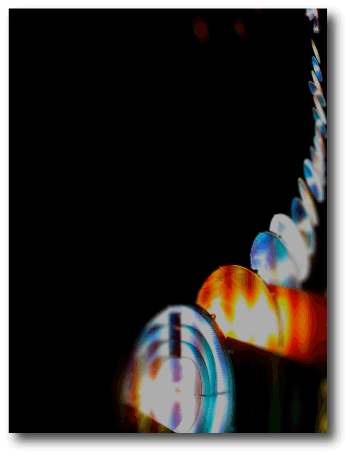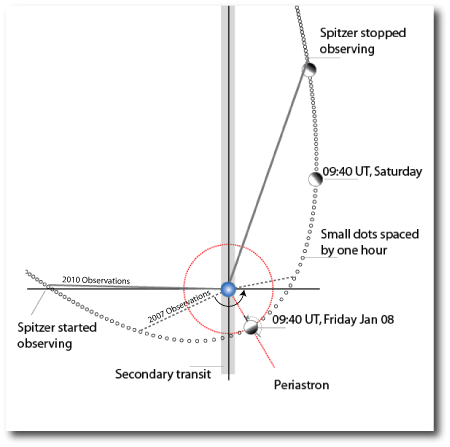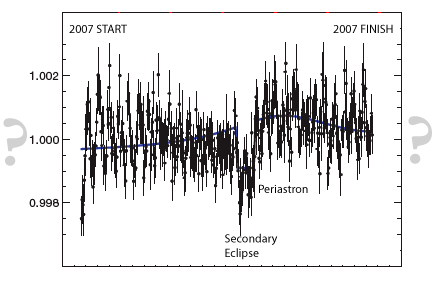Astronomers worldwide staggered into work this morning, some of them rudely elbowing their way to the front of the lines at the espresso machines, clear evidence that events surrounding the January 2010 ‘606 holiday season have finally drawn to a close.
Hopefully the data will turn out to be of high quality! As I mentioned in yesterday’s post, ground observers in both Europe and North America were out in force for the event, collecting photometric and spectroscopic data. The action was covered from space as well. We were awarded a generous 84-hour block of time on Warm Spitzer. The telescope started collecting 4.5-micron photometry more than a day prior to the secondary transit, and ended more than two days after the periastron passage.
What do we hope to learn? By observing the run-up to the secondary transit, we should be able to establish an improved baseline temperature for the planet, which should afford a better sense of how much tidal heating is occurring. And during the days following periastron, we expect to see a near-complete drop-off in flux from the planet as the periastron nightside hemisphere rotates fully into view. The 2007 observations came to a frustrating end just as this should have been starting to occur.
In addition to the secondary eclipse and the ground-based observations, Guillaume Hebrard and his collaborators were awarded 19 hours on Warm Spitzer to observe the primary transit at 4.5 microns. Their photometric time series will enable an improved radius measurement for the planet — both because of the highly accurate photometry and because the effects of stellar limb darkening are negligible in the infrared. Their time series will establish a very precise ephemeris for the transit, which will enable future observations to monitor the system for orbital precession.
Looking forward to the results…




Transit question:
HD80606b has the largest semimajor axis of a transiting planet, but what system has the largest planet-star seperation at the time of transit? Is it this one or a less eccentric one?
cwmagee: if I’ve figured out the geometry correctly, using the parameters quoted on EPE the transit of HD 80606b occurs when the planet is 0.29 AU from the star. This is slightly further out than the apastron of HD 17156b, the transiting planet with the next largest semimajor axis, but owing to the orientation of the orbit HD 17156b is only 0.056 AU from its star when it transits. The third largest semimajor axis of a transiting planet is 0.09 AU for the circular-orbit planet CoRoT-4b, so none of the currently-listed transiting planets come close.
You’d think that CoroT would have spotted something farther out by now, unles they are directing all of their followup resources towards small instead of far*.
* This definition of far is still well inside the orbit of Mercury.